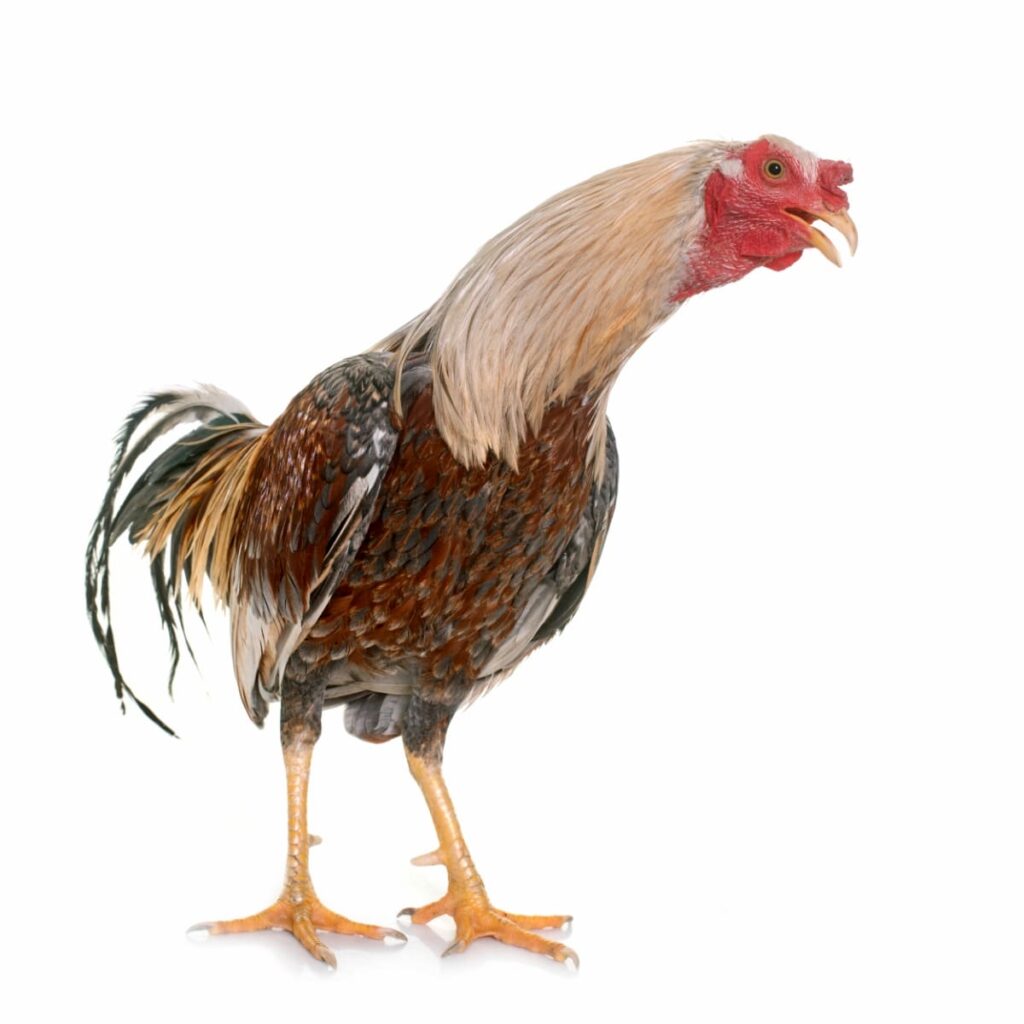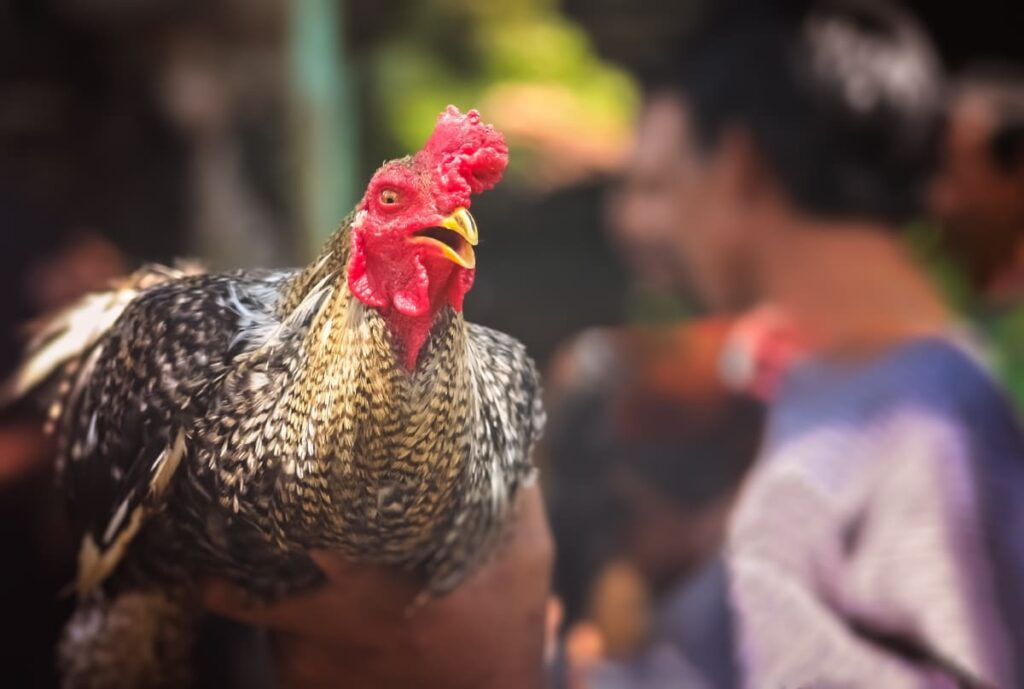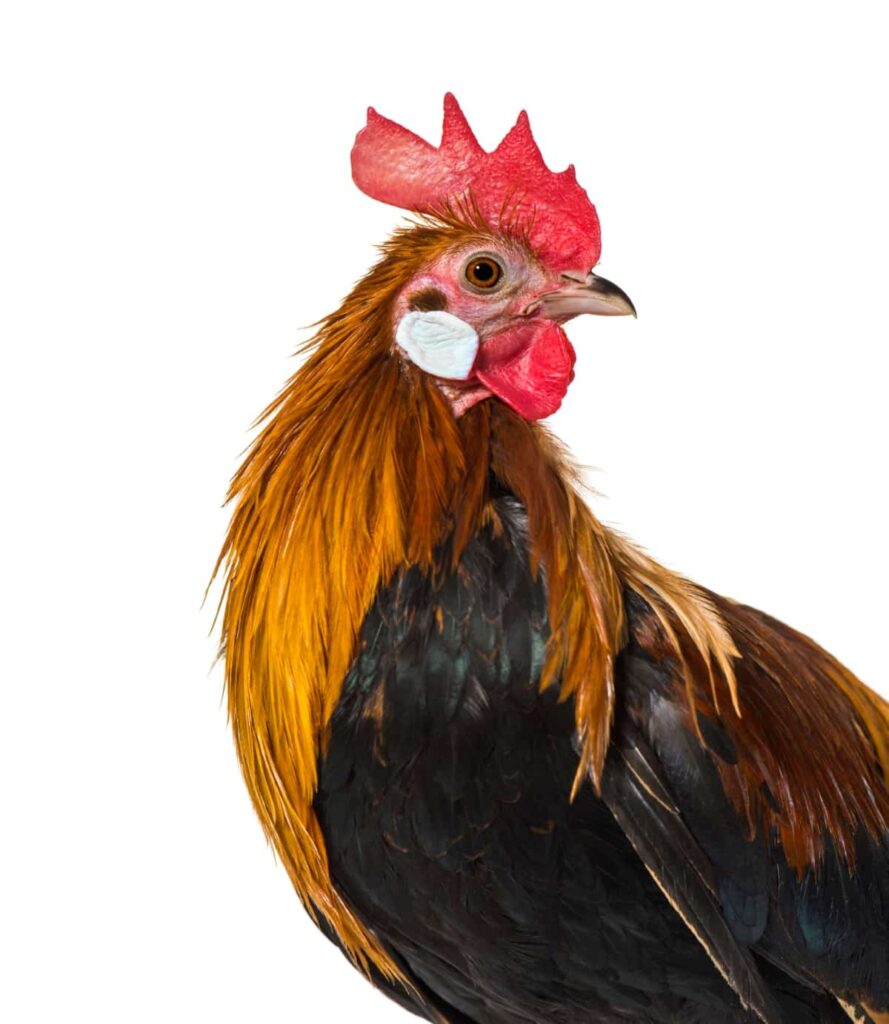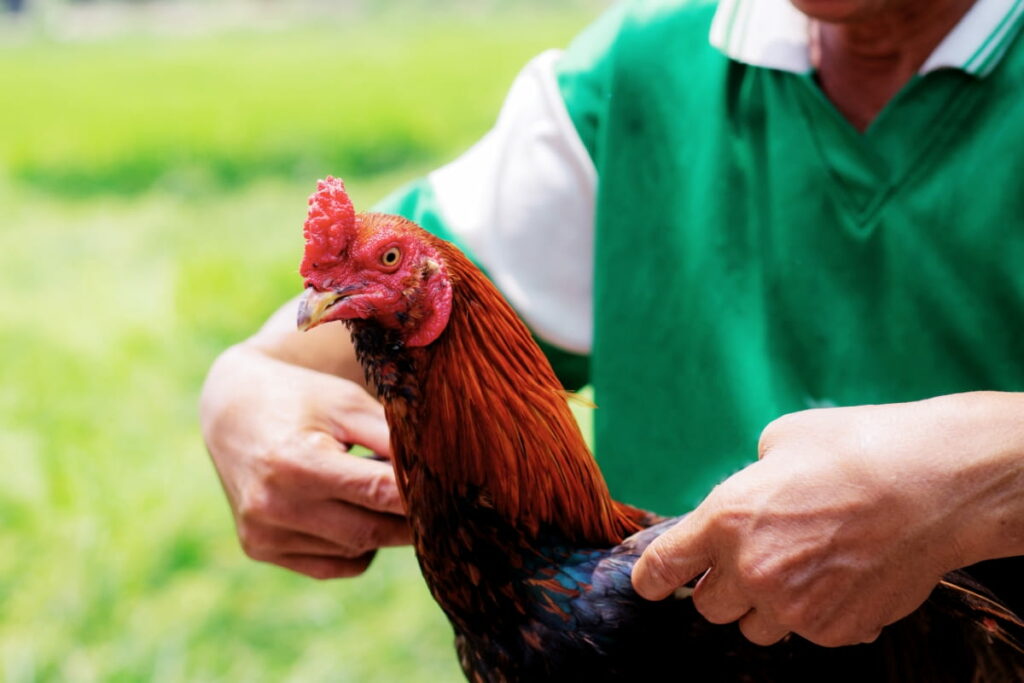Miniature gamefowls are diminutive versions of traditional gamefowls, selectively bred for compact size while retaining their inherent gamebird characteristics. These birds typically exhibit feisty personalities, vibrant plumage, and a spirited disposition. Despite their small stature, they possess remarkable agility and endurance, making them prized among enthusiasts for both ornamental and competitive purposes.

Miniature Gamefowls
History and Evolution of Miniature Game Birds
The history of miniature game birds traces back centuries, with early evidence suggesting their presence in various cultures worldwide. Selective breeding practices refined their size, temperament, and physical attributes over time. Miniature game birds have played multifaceted roles in society, serving as symbols of status, companionship, and sport. Their evolution reflects human ingenuity and the enduring fascination with these captivating avian specimens.
Popular Miniature Gamefowl Breeds
Silkie Bantams: Fluffy and Friendly
Silkie Bantams are enchanted with their distinctive fluffy plumage, gentle demeanor, and captivating appearance. Originating from China, these miniature gamefowls are renowned for their docile nature and maternal instincts. Their unique feathering, which lacks barbicels, gives them a soft, silk-like texture, earning them their name. Silkie Bantams make delightful companions and are cherished for their ornamental value.
Serama Chickens: The World’s Smallest Chicken Breed
Serama chickens, hailing from Malaysia, hold the distinction of being the smallest chicken breed globally, captivating enthusiasts with their diminutive size and bold personalities. Despite their small stature, they exude confidence and exhibit a proud carriage. Seramas come in various colors and feather patterns, further adding to their appeal. These spirited birds thrive in both urban and rural settings, making them popular among poultry enthusiasts.
Old English Game Bantams: Traditional and Tenacious
Old English Game Bantams epitomize the timeless charm and enduring appeal of miniature gamefowls. With roots tracing back to ancient Britain, these birds boast a rich history and a fierce spirit. Despite their diminutive size, they possess remarkable agility and a determined nature. Old English Game Bantams come in an array of striking colorations and are esteemed for their resilience and traditional aesthetics.
Selecting Miniature Gamefowls for Your Flock
Choosing the Right Breed
Selecting the appropriate miniature gamefowl breed is essential for a successful flock. Consider factors such as temperament, space requirements, and intended purpose—whether for ornamental display, competitive breeding, or both. Research breed characteristics and consult with experienced breeders to find the breed that aligns best with your preferences and management capabilities.
Evaluating Health and Temperament
Prioritize the health and temperament of potential additions to your flock. Look for active, alert birds with bright eyes, clean feathers, and sturdy legs. Avoid birds displaying signs of illness or aggression. Assess their compatibility with existing flock members to maintain harmony within the coop. Regular health checks and quarantine protocols for new birds are vital for disease prevention.
Miniature Gamefowl Housing and Space Requirements
Coop Design for Miniature Gamefowls
Design a coop that accommodates the unique needs of miniature gamefowls. Ensure adequate ventilation, protection from predators, and sufficient roosting space. Opt for durable materials and easy-to-clean surfaces to maintain hygiene. Provide nesting boxes for egg-laying hens and perches for roosting. Consider incorporating secure fencing to prevent escapes and minimize stress.
Space Considerations and Free-Range Options
Allocate ample space for miniature gamefowls to roam, forage, and exercise. While they require less space than standard-sized breeds, they provide a minimum of 2-3 square feet per bird within the coop and access to outdoor ranging areas whenever possible. Supervised free-ranging allows birds to exhibit natural behaviors and promotes overall well-being but ensures a safe environment free from potential hazards.
Miniature Gamefowl Nutrition and Feeding
Special Dietary Needs of Miniature Gamefowls
Tailor the diet of miniature gamefowls to meet their unique nutritional requirements. Offer high-quality poultry feed formulated specifically for bantam or miniature breeds, providing essential nutrients for growth, egg production (if applicable), and overall health. Supplement their diet with vegetables and fruits as occasional treats to enrich their diet and prevent boredom.
Providing a Balanced Diet
- Protein: Protein is essential for muscle development, egg production (if applicable), and overall health. Ensure the feed contains adequate protein levels, typically around 16-20% for laying birds and slightly lower for non-layers.
- Vitamins and Minerals: Miniature gamefowls require vitamins and minerals for various bodily functions, including bone health, immune support, and metabolism. Choose feeds fortified with essential vitamins like vitamins A, D, and E. Minerals such as calcium and phosphorus.
- Fresh Water: Provide clean, fresh water at all times. Monitor waterers regularly to ensure they are clean and functioning properly.
- Fresh Fruits and Vegetables: Supplement the diet with fresh fruits and vegetables as treats. Popular options include leafy greens, carrots, berries, and apples.
In case you missed it: Wyandotte Chicken Varieties: Exploring Wyandotte Types with Colors

Health and Wellness of Miniature Gamefowls
Common Health Issues in Miniature Game Birds
Miniature gamefowls are generally hardy birds but are susceptible to various health issues. Common ailments include respiratory infections, parasites (such as mites and worms), bumblefoot, and reproductive disorders. Regular health checks, proper hygiene, and prompt treatment of any signs of illness are crucial for maintaining the health of miniature gamefowls.
Preventative Care and Vaccination
Implement a comprehensive preventative care regimen to safeguard the health of your miniature gamefowls. This includes routine vaccinations against diseases like Marek’s disease and Newcastle disease, as well as regular parasite control measures. Provide a clean and well-ventilated living environment, balanced nutrition, and ample opportunities for exercise to support overall health and immunity.
Breeding and Incubation
Breeding Practices for Miniature Gamefowls
Select breeding stock carefully, considering traits such as conformation, temperament, and genetic diversity. Maintain detailed breeding records to track lineage and monitor for desired characteristics. Practice responsible breeding techniques and avoid close relatives to minimize the risk of genetic defects. Monitor breeding pairs closely and provide optimal conditions for successful breeding of miniature game birds and egg production.
Incubation and Baby Chicken Care
Ensure optimal conditions during incubation, including temperature, humidity, and ventilation, to maximize hatch rates. Monitor developing eggs regularly and intervene if necessary to address issues such as malpositioning or developmental abnormalities. Provide a warm, clean brooder environment for newly hatched baby chickens, with access to appropriate feed and water. Monitor baby chicken health closely and intervene promptly to address any issues that arise.
Miniature Gamefowls as Pets
Bonding with Your Miniature Game Birds
Build trust and bond with your miniature gamefowls through regular interaction and positive reinforcement. Spend time with your birds daily, offering treats, gentle handling, and verbal praise to foster a strong bond. Respect their personalities and preferences, allowing them to approach you at their own pace.
Interactive Play and Socialization
Enrich your miniature gamefowls’ lives with interactive play and socialization opportunities. Provide toys, perches, and other environmental stimuli to encourage natural behaviors like pecking, scratching, and dust bathing. Introduce new experiences gradually and monitor their responses to ensure they feel safe and secure. Encourage social interactions with other compatible birds to promote mental and emotional well-being.
In case you missed it: Welsummer Chicken Breed: Facts, Characteristics, Egg-Laying, Price, and Lifespan

Miniature Gamefowls in Shows and Competitions
Preparing Miniature Gamefowls for Exhibitions
Bathe and groom birds regularly, trimming feathers and nails as needed for a tidy appearance. Practice handling and posing techniques to showcase their conformation and temperament effectively. Pay attention to presentation details, such as clean legs and beaks, and ensure birds are in peak condition on the day of the miniature gamefowl shows.
Tips for Success in Poultry Shows
Maximize your chances of success in poultry shows by thoroughly researching show standards and requirements for your chosen breed. Select birds that exemplify breed standards and possess desirable traits such as vibrant plumage, balanced proportions, and confident demeanor. Participate in educational opportunities and networking events to further enhance your knowledge and skills in the world of poultry shows.
In case you missed it: Dong Tao Chicken Breed: Origin, History, Appearance, Size, Characteristics, Eggs, Price, and Lifespan

Conclusion
From selecting the right breed and ensuring their health to exploring breeding techniques, pet companionship, and even exhibition success, this miniature gamefowl guide offers invaluable insights into every aspect of raising miniature game birds. With dedication and knowledge, anyone can embark on a fulfilling journey with these delightful feathered companions.
- Crops Grown in Summer Season: Best Choices for Summer Gardening
- Organic Pest Control for Tomato Farming
- How to Maximize Sheep Farming Profit
- Broccoli Varieties: Choosing the Right Cultivars for Your Farm
- How to Raise Pigs in Your Own Backyard: A Comprehensive Guide
- Budget Friendly Sheep Shed Ideas: Cheap and Low-Cost Tips
- How Much Do Cattle Farmers Make: Revenue Streams in Cattle Farming
- Management Pests and Diseases in Your Cotton Field
- Sheep Farming Business Plan for Beginners
